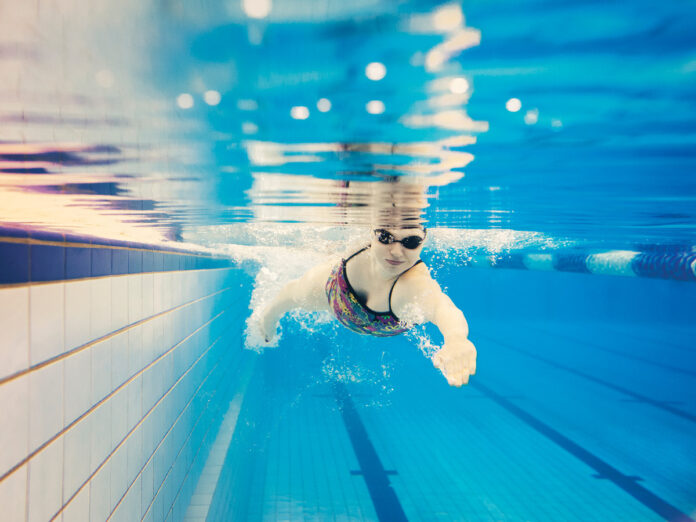
During the winter months most triathletes spend the bulk of their time swimming in a pool. One of the most effective things you can do at this time of year is make technical changes. The ideal outcome of any technical changes should be an increase in swimming speed, efficiency or both. The ultimate goal is to move more quickly while using less energy in the process.
Athletes will often equate making technical adjustments with copious amounts of drill work and slower swimming. Drills are useful in their capacity to elicit a specific feeling or put us in a favourable position, but drills for the sake of drills are not always productive.
A far better strategy is to identify the modifications you need to make, incorporate specific drills into the warm up that help reinforce it, and then swim rigorously with a full stroke keeping those adjustments in mind. It is also highly advisable to spend some time with a coach so you can receive feedback.
One of the most effective ways to pattern a technical change is to include short interval workouts with frequent rests. This strategy allows your body to continually re-engage with the improvements you are trying to make. By doing short intervals (25’s, 50’s and eventually 100’s) with regular rest and a specific technical focus, you stand to gain more than by doing longer intervals where your stroke falls apart and you ingrain poor muscle patterns.
During these training sessions your focus should be on fixing one or two specific aspects of your stroke until they become a repeatable habit that you can sustain under increasing levels of aerobic distress.
As the new techniques become easier to sustain, you can start building up your fitness level. Incorporating longer work intervals is the most obvious strategy but you can also keep the work interval the same and while shortening the rest interval. Both of these approaches will help you build fitness around your improved stroke. Ultimately the goal is to swim for longer durations while maintaining the changes you wish to make. Repetition with great stroke mechanics is the key.
Another strategy is to utilize tools like fins or pull buoys. Swimming with fins is a great way to encourage leg and lower body engagement while giving you increased propulsion and speed. This can help sustain technical changes because it takes the pressure off actually staying afloat and moving forward.
Swimming with a pull buoy can help in a similar way by making sure your hips are in a favourable position. However, like drills, tools should not be relied on too heavily and should only be used to elicit a specific feeling or help facilitate a specific change.
There are no set rules for weekly swim mileage and frequency. However, the more exposures you can create without getting injured while allowing enough space to recover, the better.
Typically an individual swim workout should be in the 2,000-4,000 meter range. A good rule is to aim for a minimum of three exposures per week and if you are really looking to improve aim for five to six exposures. Weekly mileage can be anywhere in the 10,000-20,000 meters range depending on what you have time for and it should be done progressively in the beginning so you can recover from the gradual increase in load.
5 Steps to Maximizing Pool Time
Step 1
Identify the adjustments you need to make with the primary objective being to move faster through the water with less energy and increased efficiency.
Step 2
Identify a couple of drills that will specifically help elicit the desired change and incorporate these into your warm up. Use fins during this step to help facilitate the drills and assist you in practicing new stroke mechanics.
Step 3
Swim as often as you can and start with short intervals and regular rest so you are able to continually return to the stroke mechanics you are hoping to pattern.
Step 4
Gradually make changes in the workouts that will help you build fitness around your new stroke. This can include increasing the work interval length, decreasing the rest interval length or increasing the rate of speed with which you execute the new mechanics.
Step 5
Once successful, find new areas that can be improved upon. The best strategy is to reconnect with a coach who can confirm your progress or lack thereof.
Swim Workout
This is a very simple workout structure you can implement several times a week. The main set intervals can range from 25 meters to 100 meters based on how long you can maintain the stroke mechanics you’re aiming for.
The rest interval does not need to be fixed initially but as your stroke improves and as your fitness increases, you can be more disciplined with a structured set that challenges your ability to maintain a specific pace while adhering to great stroke mechanics.
Warm up
- 300 m choice
- 200 m kick
- 8 x 50 m [25 m drill (specific to your needs) then 25 m swim on 10-15 seconds of rest, with or without fins]
- 100 m easy back/free
Main Set
- 10 – 20 x (25 m, 50 m, 75 m or 100 m) swim on as much rest is needed to maintain great stroke mechanics. As your fitness improves you can be more disciplined with a specific pace time that allows for 10-15 seconds of rest between intervals.
Cool down
- 200 m kick
- 300 m choice
















